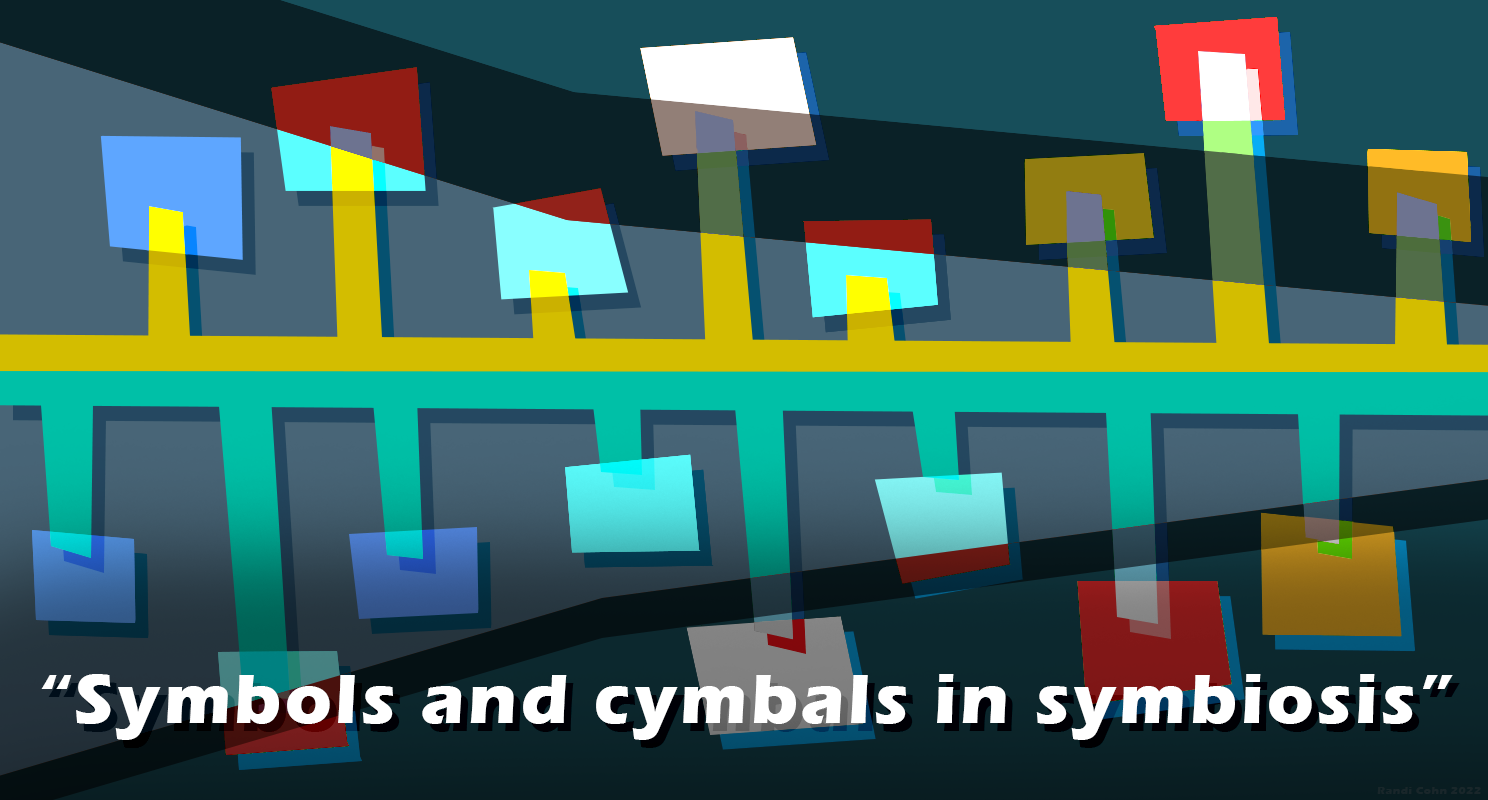
When I kick the bucket drum, I’ll leave behind three creations: my spawn and 10 buckets of bits. One bucket full of code and another brimming with notes. /* No, not these kinds of notes. */
Perhaps the artifact in this Game Over scene will instead be more akin to a single, large, loud volume where .exe and .wav files have gone to fade out their filename extensions and merge with abandon. In the game loop of my biocomputer, this is the degree to which for-loops and 16-bar loops play off each other and engage in a constant, consonant, interdisciplinary dance of call and response. I am reflecting not on some shallow, semantic version of symbols and cymbals in symbiosis but a real, requisite reciprocity recursing deep into namespace SubBass.
Reset.
The soundtracker type of music-making program is possibly the best visual representation of my mind’s Venn diagram of code and music. 64 lines of musical code per pattern. Instructions like glissando and vibrato, and their operands, are given in hexadecimal numbers. Even the equivalent of the break command is available, immediately exiting the current pattern and jumping to the top of the subsequent one when executed.
In other words, this is not entirely different from writing regular code, especially the closer you get to the metal. *looks at camera* With the exception of procedurally generated music, the output is of course quite different but it’s still a sequence of instructions producing a result.
Before a satisfactory outcome is reached, however, in both cases we’re engaged in an activity of problem-solving on a timeline. In code, we want correct calculations and logic flow. In music, we want desired harmonies and timing. For years, at a fairly young age, I wrote assembly code in Devpac and composed music in soundtrackers like Audio Sculpture. I don’t know if it was that dual activity itself or the particular environments I worked in – or both – that contributed to this need to always do both, one side powering the other, alternating. I only use trackers on rare occasions now in favor of horizontal piano roll sequencers, but regardless, if I leave one side on pause for too long, the other suffers.
I suspect the most significant contributor to the elevated creative and productive state I reach when I keep both sides running is the vast difference in how the output is received by mind and body. The creation mechanics may have some similarities but the enjoyment and satisfaction of the result happens on opposite ends of the mind.
Getting a complex piece of code running for the first time never gets old. You beat the computer into submission with your ability to emulate its behavior in your head. You broke down a big problem into small pieces and placed those pieces to interlock just so. The computer doesn’t lie, so if your program behaves, you’ve found the truth. You controlled something in an uncontrollable universe. That is, mildly speaking, a huge boost that’ll get you booted up and executing in other seemingly unrelated areas.
Finishing a song or even nailing a transition or slice of sound design brings an entirely different type of joy. In stark contrast to coding where you end up owning the computer, the music owns you when it’s ready to. Your composition knew from the beginning what it wanted to be and you were just there to stack and remove and balance and listen. It’s ready now and it’ll transport you to exactly where it wants you, hypnotized. At some point you snap out of it and there’s calm in your mind where once there was a storm. There’s sudden motivation and new realizations. You’re ready to crank up the tempo elsewhere.
For my own health, happiness, creativity and productivity I need to continually be solving problems on both a left-side timeline and a right-side timeline. Doing so not only propels those timelines forward, it solves problems on my center timeline – my life’s timeline. I suppose it’s nothing short of a lifeline.
while (true) thereAre = 2; // <(-_-)>
If you’re stuck in an infinite loop, have coder’s block, writer’s block or just a lack of inspiration or motivation, have you thought about what you can do to exercise and introduce newness to both the logical and creative sides of your brain? Have you considered the possibility that in order to reach your full potential in one area, you may also have to engage in something dramatically different and ostensibly separate? The strangest pair can form a connection.
It’s conceivable that powering up an underutilized part of your brain and linking a few new dots in your mind will ultimately generate the energy and path you need to reach the next point on your own life’s timeline.
Toward the end of writing this article, inspiration to fill up the musical bucket magically arrived. You’ll know you’ve found your power supply when simply talking about it makes you want to engage. This works – do the thing!